Today I would like to share with you a small case from a project I just worked on. Because we are working on a chat function, the previous chat page UI was very ugly, so I will not show it to you here.
Now I will teach you how to use css3 to create a page that is the same as the WeChat chat interface.
First of all, let me show you what the page looks like, as shown below:

Xiaoyue Blog imitation WeChat chat interface
page This is roughly what it looks like, let’s learn the production steps together.
Part One: HTML
<div class="leftd">
<span ng-class="leftd_h">
<img src="/static/imghwm/default1.png" data-src="./img/c_pic.pn" class="lazy" ng- / alt="An example of using CSS3 to imitate WeChat chat bubbles" >
</span>
<div class="speech left" ng-class="speech left">
二货,你看你傻样!
</div>
</div>
<div class="rightd">
<span ng-class="rightd_h">
<img src="/static/imghwm/default1.png" data-src="./img/u_pic.pn" class="lazy" ng- / alt="An example of using CSS3 to imitate WeChat chat bubbles" >
</span>
<div class="speech right" ng-class="speech left">
嘻嘻嘻嘻。。。。。。
</div>
</div>
<div class="leftd">
<span ng-class="leftd_h">
<img src="/static/imghwm/default1.png" data-src="./img/c_pic.pn" class="lazy" ng- / alt="An example of using CSS3 to imitate WeChat chat bubbles" >
</span>
<div class="speech left" ng-class="speech left">
笑什么笑,没看到本宝宝今天变漂亮了吗?
</div>
</div>
<div class="rightd">
<span ng-class="rightd_h">
<img src="/static/imghwm/default1.png" data-src="./img/u_pic.pn" class="lazy" ng- / alt="An example of using CSS3 to imitate WeChat chat bubbles" >
</span>
<div class="speech right" ng-class="speech left">
不不不,每天你都很漂亮的啦!
</div>
</div>Part Two: CSS3
PS (This is also the most important part, so I’ll show you all the code!)
/* 微信气泡 */
div.speech {
float: left;
margin: 10px 0;
padding: 8px;
table-layout: fixed;
word-break: break-all;
position: relative;
background: -webkit-gradient( linear, 50% 0%, 50% 100%, from(#ffffff), color-stop(0.1, #ececec), color-stop(0.5, #dbdbdb), color-stop(0.9, #dcdcdc), to(#8c8c8c) );
border: 1px solid #989898;
border-radius: 8px;
}
div.speech:before {
content: '';
position: absolute;
width: 0;
height: 0;
left: 15px;
top: -20px;
border: 10px solid;
border-color: transparent transparent #989898 transparent;
}
div.speech:after {
content: '';
position: absolute;
width: 0;
height: 0;
left: 17px;
top: -16px;
border: 8px solid;
border-color: transparent transparent #ffffff transparent;
}
div.speech.right {
display: inline-block;
box-shadow: -2px 2px 5px #CCC;
margin-right: 10px;
max-width: 75%;
float: right;
background: -webkit-gradient( linear, 50% 0%, 50% 100%, from(#e4ffa7), color-stop(0.1, #bced50), color-stop(0.4, #aed943), color-stop(0.8, #a7d143), to(#99BF40) );
}
div.speech.right:before {
content: '';
position: absolute;
width: 0;
height: 0;
top: 9px;
bottom: auto;
left: auto;
right: -10px;
border-width: 9px 0 9px 10px;
border-color: transparent #989898;
}
div.speech.right:after {
content: '';
position: absolute;
width: 0;
height: 0;
top: 10px;
bottom: auto;
left: auto;
right: -8px;
border-width: 8px 0 8px 9px;
border-color: transparent #bced50;
}
div .left {
display: inline-block;
box-shadow: 2px 2px 2px #CCCCCC;
margin-left: 10px;
max-width: 75%;
position: relative;
background: -webkit-gradient( linear, 50% 0%, 50% 100%, from(#ffffff), color-stop(0.1, #eae8e8), color-stop(0.4, #E3E3E3), color-stop(0.8, #DFDFDF), to(#D9D9D9) );
}
div .left:before {
content: '';
position: absolute;
width: 0;
height: 0;
top: 9px;
bottom: auto;
left: -10px;
border-width: 9px 10px 9px 0;
border-color: transparent #989898;
}
div .left:after {
content: '';
position: absolute;
width: 0;
height: 0;
top: 10px;
bottom: auto;
left: -8px;
border-width: 8px 9px 8px 0;
border-color: transparent #eae8e8;
}
.leftimg {
float: left;
margin-top: 10px;
}
.rightimg {
float: right;
margin-top: 10px;
}
.leftd {
clear: both;
float: left;
margin-left: 10px;
}
.rightd {
clear: both;
float: right;
margin-right: 10px;
}
.leftd_h{
width: 39px;
height: 39px;
border-radius: 100%;
display: block;
float: left;
overflow: hidden;
}
.leftd_h img{
display: block;
width: 100%;
height: auto;
}
.rightd_h{
width: 39px;
height: 39px;
border-radius: 100%;
display: block;
float: right;
overflow: hidden;
}
.rightd_h img{
display: block;
width: 100%;
height: auto;
}Here are basically small bubbles made using CSS pseudo-class elements. There are many cases on the Internet where the user's chat avatar is used as the background image, but I feel that this is not very suitable in actual projects, so I made some modifications to make it more practical.
The above is the detailed content of An example of using CSS3 to imitate WeChat chat bubbles. For more information, please follow other related articles on the PHP Chinese website!
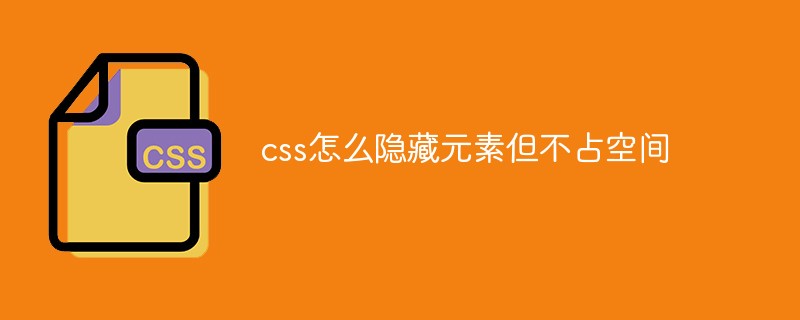 css怎么隐藏元素但不占空间Jun 01, 2022 pm 07:15 PM
css怎么隐藏元素但不占空间Jun 01, 2022 pm 07:15 PM两种方法:1、利用display属性,只需给元素添加“display:none;”样式即可。2、利用position和top属性设置元素绝对定位来隐藏元素,只需给元素添加“position:absolute;top:-9999px;”样式。
 原来利用纯CSS也能实现文字轮播与图片轮播!Jun 10, 2022 pm 01:00 PM
原来利用纯CSS也能实现文字轮播与图片轮播!Jun 10, 2022 pm 01:00 PM怎么制作文字轮播与图片轮播?大家第一想到的是不是利用js,其实利用纯CSS也能实现文字轮播与图片轮播,下面来看看实现方法,希望对大家有所帮助!
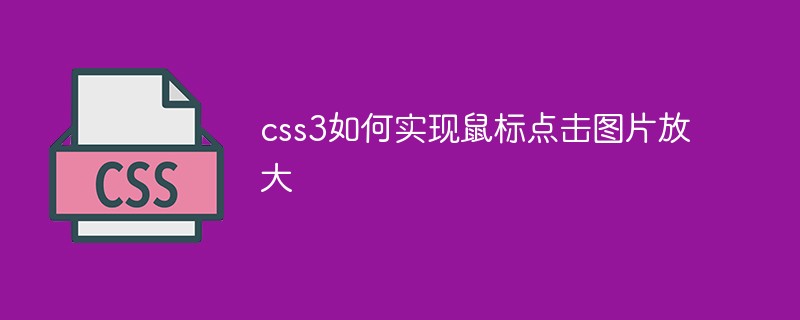 css3如何实现鼠标点击图片放大Apr 25, 2022 pm 04:52 PM
css3如何实现鼠标点击图片放大Apr 25, 2022 pm 04:52 PM实现方法:1、使用“:active”选择器选中鼠标点击图片的状态;2、使用transform属性和scale()函数实现图片放大效果,语法“img:active {transform: scale(x轴放大倍数,y轴放大倍数);}”。
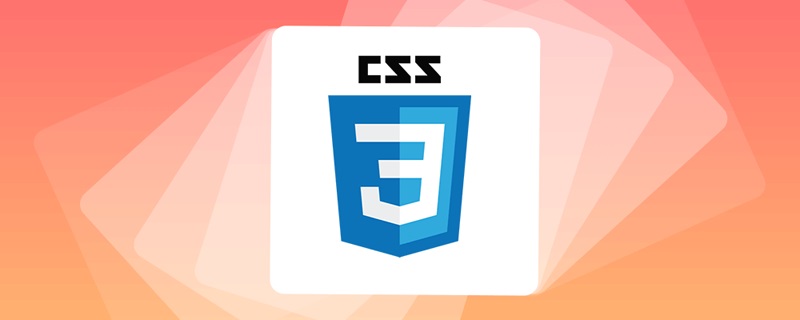 css3什么是自适应布局Jun 02, 2022 pm 12:05 PM
css3什么是自适应布局Jun 02, 2022 pm 12:05 PM自适应布局又称“响应式布局”,是指可以自动识别屏幕宽度、并做出相应调整的网页布局;这样的网页能够兼容多个不同的终端,而不是为每个终端做一个特定的版本。自适应布局是为解决移动端浏览网页而诞生的,能够为使用不同终端的用户提供很好的用户体验。
 css3动画效果有变形吗Apr 28, 2022 pm 02:20 PM
css3动画效果有变形吗Apr 28, 2022 pm 02:20 PMcss3中的动画效果有变形;可以利用“animation:动画属性 @keyframes ..{..{transform:变形属性}}”实现变形动画效果,animation属性用于设置动画样式,transform属性用于设置变形样式。
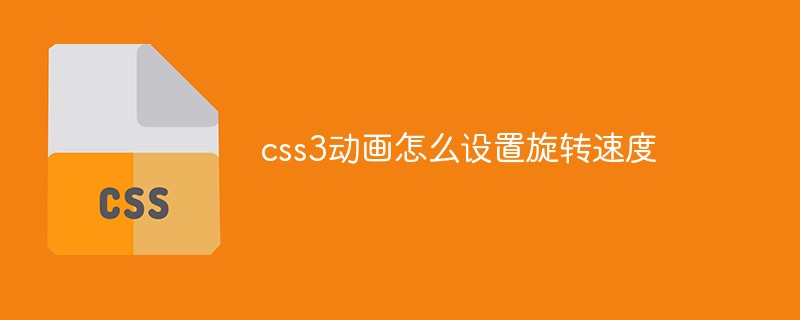 css3怎么设置动画旋转速度Apr 28, 2022 pm 04:32 PM
css3怎么设置动画旋转速度Apr 28, 2022 pm 04:32 PM在css3中,可以利用“animation-timing-function”属性设置动画旋转速度,该属性用于指定动画将如何完成一个周期,设置动画的速度曲线,语法为“元素{animation-timing-function:速度属性值;}”。
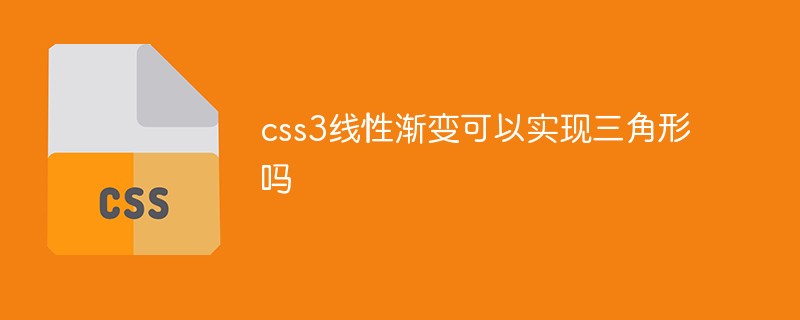 css3线性渐变可以实现三角形吗Apr 25, 2022 pm 02:47 PM
css3线性渐变可以实现三角形吗Apr 25, 2022 pm 02:47 PMcss3线性渐变可以实现三角形;只需创建一个45度的线性渐变,设置渐变色为两种固定颜色,一个是三角形的颜色,另一个为透明色即可,语法“linear-gradient(45deg,颜色值,颜色值 50%,透明色 50%,透明色 100%)”。
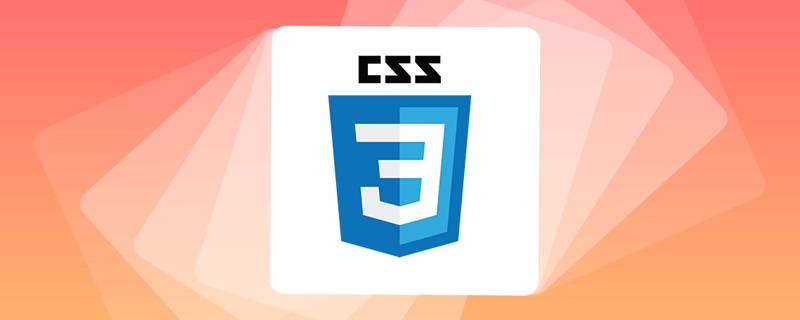 一文了解CSS3中的新特性 ::target-text 选择器Apr 12, 2022 am 11:24 AM
一文了解CSS3中的新特性 ::target-text 选择器Apr 12, 2022 am 11:24 AM本篇文章带大家一起深入了解一下CSS3中的新特性::target-text 选择器,聊聊该选择器的作用和使用方法,希望对大家有所帮助!


Hot AI Tools

Undresser.AI Undress
AI-powered app for creating realistic nude photos

AI Clothes Remover
Online AI tool for removing clothes from photos.

Undress AI Tool
Undress images for free

Clothoff.io
AI clothes remover

AI Hentai Generator
Generate AI Hentai for free.

Hot Article

Hot Tools

ZendStudio 13.5.1 Mac
Powerful PHP integrated development environment

Safe Exam Browser
Safe Exam Browser is a secure browser environment for taking online exams securely. This software turns any computer into a secure workstation. It controls access to any utility and prevents students from using unauthorized resources.

DVWA
Damn Vulnerable Web App (DVWA) is a PHP/MySQL web application that is very vulnerable. Its main goals are to be an aid for security professionals to test their skills and tools in a legal environment, to help web developers better understand the process of securing web applications, and to help teachers/students teach/learn in a classroom environment Web application security. The goal of DVWA is to practice some of the most common web vulnerabilities through a simple and straightforward interface, with varying degrees of difficulty. Please note that this software

SublimeText3 English version
Recommended: Win version, supports code prompts!

VSCode Windows 64-bit Download
A free and powerful IDE editor launched by Microsoft






